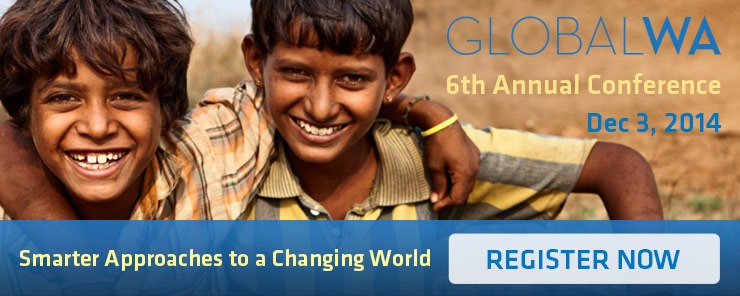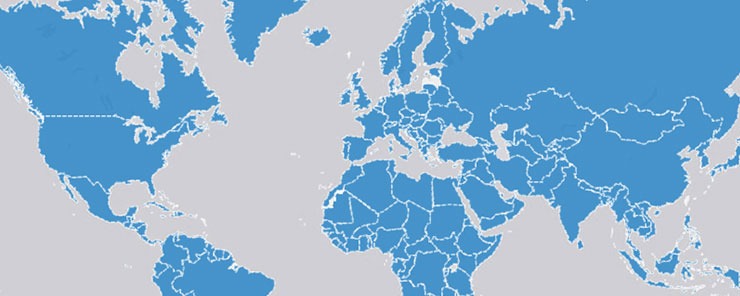Stay tuned for our January 2015 newsletter!
IN THIS ISSUE
- Letter from our Executive Director
- Question of the Month
- Featured Organization: Global Visionaries
- Changemaker: Rick Beckett, President & CEO, Global Partnerships
- GlobalWA On the Ground: Mangrove Action Project
- Welcome New Members
- GlobalWA Member Events
- Career Center
- GlobalWA Events
Letter from our Executive Director
Are you on the map? Global Washington is raising the profile of those working in international development and putting them on the map – both figuratively and literally. This week, we are launching a new interactive map to show where our members work and what they do.
Did you know there are 35 Global Washington members working in Kenya? And, 36 members working on solutions to global health challenges? I encourage you to check out the map, look for potential program partners and browse NGOs that align with your interests. We will continually update the map as we gain new members and information changes. To update your data now, please contact us.
Also this month, we are finalizing speakers for our 6th Annual Global Washington Conference on December 3, 2014. Two of our main speakers are Pulitzer Prize winning journalist Sonia Nazario and the President & CEO of the U.S. fund for UNICEF, Caryl Stern. Join your colleagues in discussions about NGO-business partnerships, new financial models and productive failures. This year’s conference will bring you Smarter Approaches to a Changing World. As in previous years, members will have the opportunity to give a 2-minute pitch about their own smarter approaches. To apply for Fast Pitch, click here. For more information on the conference agenda and to register, click here.
I hope to see you at our conference in December.
Sincerely,
Kristen Dailey
Executive Director
Question of the Month
GlobalWA will ask you a question every month and synthesize the responses and make available to our member organizations. Please take a moment to respond to the question for this month:
Have you seen our new interactive member map? It can be viewed on our website at: https://globalwa.org/our-members/member-map/
Thoughts? Comments? Member data updates?
We would love your feedback as we showcase our member organizations and the Washington state global development community.
Please click here to to leave feedback.
Featured Organization
Global Visionaries
By Liv Froehlich
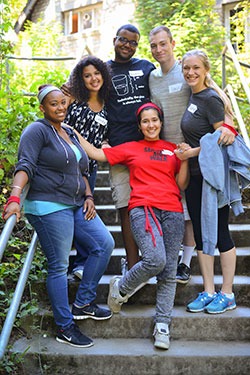 During last month’s United Nations Climate Summit, more than 400,000 people took to the streets of New York and other cities across the globe to participate in the largest mobilization of climate activism the world has ever seen. In a time of multiple global problems such as climate change, racial and ethnic tensions, resource shortages, wars and class disparity, these demonstrations exemplify the desire to find solutions to seemingly insurmountable global challenges.
During last month’s United Nations Climate Summit, more than 400,000 people took to the streets of New York and other cities across the globe to participate in the largest mobilization of climate activism the world has ever seen. In a time of multiple global problems such as climate change, racial and ethnic tensions, resource shortages, wars and class disparity, these demonstrations exemplify the desire to find solutions to seemingly insurmountable global challenges.
Chris Fontana, executive director of Seattle-based Global Visionaries, believes that our youth have a major role to play.
“In the same way that youth, throughout history, have been at the forefront of change, we need to recognize today that we operate in a world where youth are discriminated against because of their age and they aren’t given their due,” Fontana said. Global Visionaries (GV) is looking to change this by recognizing the power of youth in shaping our future and tackling global issues.
Stepping into the GV office, it seems fitting that it has established its home inside of a repurposed school building in Seattle’s Beacon Hill neighborhood. The organization itself functions as a platform for youth to become change makers and “repurpose” traditional views on education and learning through a variety of programs.
“You can’t teach responsibility for the planet, you can only share it.” said Fontana.
In practice, GV has implemented its democratic pedagogy in a number of ways. The organization began in 1997. At the time, Fontana was working as a Spanish teacher at Islander Middle School on Mercer Island. Driven by a desire to instill in his students the principals of global stewardship and accountability, he began to lead trips to Guatemala.
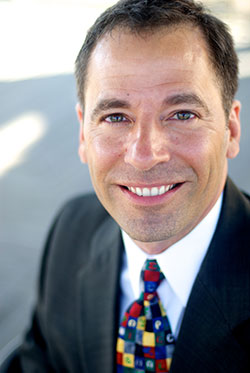
Chris Fontana, Executive Director
What initially began as a small trip of five students “pitching in” on community projects has since expanded over the past 18 years into a way of sharing knowledge through leadership programs, in-school and afterschool classes and curriculum and a local youth board. Today, there are close to 4,000 GV alums, with almost 220 students from both Seattle and Guatemala participating in its Leadership Program each year. Through partnerships with municipal governments and local community organizations, these students have helped to build entire schools, work in hospitals and aid in reforestation efforts (with an average of 4,000 trees being planted per year).
While the community work that students do over the course of the program is certainly impressive, it is the broader themes that are instilled in participants that make this program exceptionally unique. As Fontana explains, “Rather than presenting a world view, it is about presenting them with the tools to create a new world view.”
Students who have already participated in GV programs have the option of continuing to work with the organization as part of its Youth Board and through internships. Roughly 35 percent choose to do so. Indeed, the office is often full of past participants who are now facilitating Leadership Program discussions on the topics of racism, classism, sexism and imperialism.
“Throughout the course of the program, [students] come to the deep realization that we are all in this together and we have a stake in the creation of disparity and the creation of equality,” said Fontana.
An integral part of all GV programs is the diversity of its students. Emphasizing the importance of learning from one another, Fontana explained that, by design, students work with people from very different and diverse backgrounds. The organization works to remove barriers to participation by hosting application workshops at schools, organizing scholarships and including fundraising as a mandatory part of the Leadership Program.
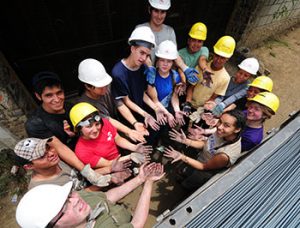 Part of the reason for GV’s success, aside from a powerful student leadership contingency, has been the partnerships that it has formed with Seattle schools and teachers. Recognizing that progress requires a fundamental paradigm shift within schools, GV has begun to host week-long “train the trainer” workshops for teachers and educators. Teachers have taken their knowledge from these workshops and begun to implement global leadership classes in a number of schools in the Seattle area. This curriculum engages students in the most pressing issues they face in the 21st century including climate change, resource depletion, poverty, and education reform. Teachers act as facilitators, while students are accountable for the generation and retention of content through listening and collaborating with their peers. From this, teachers are able to legitimize young people and encourage them to become engaged leaders and public citizens.
Part of the reason for GV’s success, aside from a powerful student leadership contingency, has been the partnerships that it has formed with Seattle schools and teachers. Recognizing that progress requires a fundamental paradigm shift within schools, GV has begun to host week-long “train the trainer” workshops for teachers and educators. Teachers have taken their knowledge from these workshops and begun to implement global leadership classes in a number of schools in the Seattle area. This curriculum engages students in the most pressing issues they face in the 21st century including climate change, resource depletion, poverty, and education reform. Teachers act as facilitators, while students are accountable for the generation and retention of content through listening and collaborating with their peers. From this, teachers are able to legitimize young people and encourage them to become engaged leaders and public citizens.
“Whatever professional path they choose in life is secondary to the way they live,” said Fontana.” He said that he receives regularly from GV alums stories about where they are now living across the globe, organizing farm workers and working with food justice and communities of color. In every example, these individuals are full of passion that will undoubtedly do exactly what the program intended – help create a just, equitable and sustainable future.
Changemaker
Rick Beckett, President & CEO, Global Partnerships
By Dean Forbes
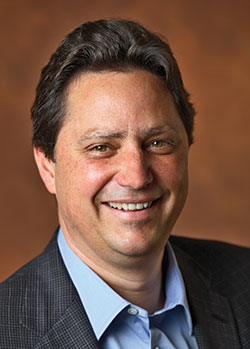 How do you combine traditional charitable giving, enlightened public policy and market-based solutions to lift hundreds of millions of people out of extreme poverty? That’s a question that Seattle-based Global Partnerships has been working on for 20 years. Its focus is on the latter in the form of investing philanthropic and investor dollars into local microfinance institutions, social businesses and cooperatives to create opportunities for impoverished persons to access credit to start a small business and to obtain essential services such as healthcare.
How do you combine traditional charitable giving, enlightened public policy and market-based solutions to lift hundreds of millions of people out of extreme poverty? That’s a question that Seattle-based Global Partnerships has been working on for 20 years. Its focus is on the latter in the form of investing philanthropic and investor dollars into local microfinance institutions, social businesses and cooperatives to create opportunities for impoverished persons to access credit to start a small business and to obtain essential services such as healthcare.
Global Partnerships (GP) celebrates its 20th anniversary this fall. Founded in 1994 by Bill and Paula Clapp, it started out as a private foundation that used grants funded by philanthropy to pioneer microfinance work in Central America. Today, the non-profit is a self-described “impact investor” by using its own social investment funds and charitable donations to invest in market-based solutions in 12 countries in Latin America and the Caribbean. Global Partnerships says its mission to expand opportunity for people living in poverty reflects the organization’s “belief that markets have an essential role to play in bringing meaningful and sustainable opportunity to millions of people living in poverty.”
According to its latest statistics, GP has served two million people by investing more than $132 million in 73 partner institutions in microfinance, social businesses and cooperatives. GP focuses on four “impact areas:” Health services, rural livelihoods, green technology and “microentrepreneurship.” Women comprise 77 percent of the people the partners serve.
Microfinance, social investing, social enterprises, and impact investment: What does all of this mean in the world of global development and how does it help the impoverished? CEO Rick Beckett agreed to participate in an interview with Global Washington to explain how its brand of “impact investing” has changed the lives of people.
GlobalWA: Global Partnerships’ approach to poverty alleviation has evolved over the years. What are a few of the most significant changes that have taken place and what has been their impact?
Rick Beckett: While our organization has evolved, what has not changed is our mission. Global Partnerships’ mission is to expand opportunity for people living in poverty. Everything we do is dedicated to that purpose. GP spent its first decade as a grant maker in the early days of microfinance. It played a pioneering role, as did others, in demonstrating that microfinance could serve as an impactful, sustainable and market-scaled solution to global poverty.
As we reflect back over 20 years, we see how learning from our early work in microfinance has shaped our current strategy as a nonprofit impact investor. We learned that it takes more than a small loan to make a real difference, and our investments in micro entrepreneurship and rural livelihoods reflect emerging best practices in combining access to credit with the training and access to markets that are required to help people living in poverty stabilize and increase their incomes.
 We recognized that one of the great challenges in global development – actually getting basic products and services into the hands of impoverished families – can be tackled, in part, by leveraging the sustainable delivery channels created by microfinance. This insight is guiding our investments in health education, essential medicines and health services. And we learned that markets can expand opportunity on a global scale. Nowhere is this more clearly demonstrated than through microfinance which now reaches almost 200 million families worldwide. GP’s most recent investments in creating access to solar lights for impoverished, off-the-grid households reflects our belief that, like microfinance, these technologies will not only have a significant positive impact, they are likely to achieve social impact on a global basis.
We recognized that one of the great challenges in global development – actually getting basic products and services into the hands of impoverished families – can be tackled, in part, by leveraging the sustainable delivery channels created by microfinance. This insight is guiding our investments in health education, essential medicines and health services. And we learned that markets can expand opportunity on a global scale. Nowhere is this more clearly demonstrated than through microfinance which now reaches almost 200 million families worldwide. GP’s most recent investments in creating access to solar lights for impoverished, off-the-grid households reflects our belief that, like microfinance, these technologies will not only have a significant positive impact, they are likely to achieve social impact on a global basis.
Perhaps the most profound lesson we have learned that has most affected our strategy is this: In order to bring opportunity to millions of people living in poverty, we need to think differently about capital. Ten years ago, before “impact investing” had burst onto the world stage, we realized that both philanthropic and investment capital are needed to unlock market-based solutions to poverty. Philanthropy fuels innovation, funds learning and leads the way. Mission-centered, impact-led investment capital sustains and grows market-based solutions to poverty. By embracing a different mindset and this hybrid approach, GP has been able to increase its impact from 23,000 lives touched to more than 2.5 million lives touched in less than a decade.
GlobalWA: Speaking of impact, Global Partnerships describes itself as an impact investor. For readers unfamiliar with this language, what is impact investing and how is it different from traditional investing?
Beckett: When we use the term impact investing, we are referring to the growing number of individuals and institutions that want to reflect their values in their investing. These investors are going beyond “doing less harm,” which means screening out and avoiding investments that harm people and the planet (and also called socially responsible investing), to “doing more good,” which means investing in things that have a clear, positive purpose. Such purposes might include things like building affordable housing or commercialization of low carbon sources of energy or financing school construction in low income communities or creating economic opportunity for people living on a few dollars per day in the developing world.
Traditional investing seeks maximum risk-adjusted financial returns. It’s about the money. Impact investing seeks a genuine double or triple bottom line – including financial, social, and environmental returns – that better reflect an investor’s values and the world they want to pass on to future generations.
GlobalWA: GP states that markets have an essential role to play in bringing meaningful opportunity to people living in poverty. Why?
Beckett: For the simple reason that good government, smart policy, public funding, effective partnerships and charitable endeavors are all necessary and essential but they are not sufficient to address global poverty.
If we want billions of people living in poverty to have a chance to earn a living and improve their own lives, we have to harness market forces for good. We need markets to create inclusive economic opportunity. We need them to bring basic, affordable goods and services to people who are living without them.
We believe that it will take an “all of the above” approach – private, public and social sectors doing what they do best – to address global poverty.
GlobalWA: What is the attraction of your social investment funds to investors if financial return is not as high as in traditional investments?
Beckett: Over the past 36 consecutive quarters, GP’s social investment funds have delivered consistent, fixed income returns as targeted to all fund investors. That said, the reason investors get involved in our funds is because they find the social impact compelling. They value the “social return” alongside the “financial return.” They appreciate the opportunity to have some of their assets at work in the world making a real difference.
GlobalWA: Global Partnerships works throughout Latin America and the Caribbean. How do you decide where to work?
Beckett: We began our work in four of the poorer countries in Central America, and have expanded our reach to a total of twelve countries since our inception.
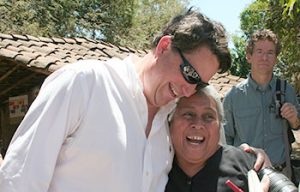 We take an “edge out” approach to growth. GP broadens the kind of opportunity in which it invests – from microfinance in the beginning to micro entrepreneurship, rural livelihoods, health and solar lights today – as we become convinced of positive impact in the lives of people living in poverty. GP expands the types of social enterprises in which it invests – from microfinance institutions to cooperatives to social businesses – as we become convinced that these types of partners can effectively and sustainably deliver high impact products and services to the people we exist to serve. And GP enters new countries as we become convinced that there is high impact work going on and that there are social enterprise partners in which we can invest.
We take an “edge out” approach to growth. GP broadens the kind of opportunity in which it invests – from microfinance in the beginning to micro entrepreneurship, rural livelihoods, health and solar lights today – as we become convinced of positive impact in the lives of people living in poverty. GP expands the types of social enterprises in which it invests – from microfinance institutions to cooperatives to social businesses – as we become convinced that these types of partners can effectively and sustainably deliver high impact products and services to the people we exist to serve. And GP enters new countries as we become convinced that there is high impact work going on and that there are social enterprise partners in which we can invest.
As we look to the future, we are exploring East Africa as a next frontier. In part, this is because Africa experiences the deepest, most pervasive and persistent rates of poverty in the world. Also, it is because we believe that social enterprises in East Africa need the kind of mission-centered, impact-led investment that GP provides.
GlobalWA On the Ground
Mangrove Action Project
By Holly Koch
This is the first in a series of articles written by Holly Koch, former GlobalWA intern and now half of the Adventure in Focus duo. While traveling throughout Southeast Asia, AIF is documenting the projects of several GlobalWA member organizations that are working on the ground in the region. Holly submitted this article from Thailand, while working with Mangrove Action Project.
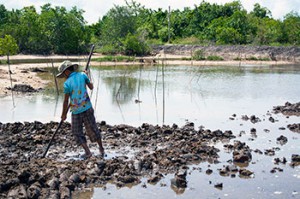 As the Pacific Northwest readies itself for the chilly showers of fall and the icy roads of winter, Thailand is preparing for the end of its monsoon season, bringing with it clear skies and an influx of international tourists. While many will head to the Andaman coast, pulled by the allure of its paradise-like beaches, organizations like Mangrove Action Project (MAP) are drawn by the importance of its coastal forests.
As the Pacific Northwest readies itself for the chilly showers of fall and the icy roads of winter, Thailand is preparing for the end of its monsoon season, bringing with it clear skies and an influx of international tourists. While many will head to the Andaman coast, pulled by the allure of its paradise-like beaches, organizations like Mangrove Action Project (MAP) are drawn by the importance of its coastal forests.
Nearly 520 miles south of Bangkok, in what guidebooks describe as Thailand’s “Deep South,” is the city of Trang. Remote enough to appease its operations budget; serviceable enough to access Bangkok by plane, train, and automobile; and a stone’s throw from the mangroves the organization has dedicated itself to preserve and restore, the city has been a convenient home for MAP Asia’s operations.
As interns, we spent the last month hungrily absorbing information from conversations about mangroves, conservation and government-relations in Thailand, eagerly accepting any chance to accompany the staff into the field in an attempt to understand MAP’s on-the-ground presence. What we discovered over countless iced coffees and bowls of hot noodles is a group of people who live and breathe the work they do.
“People always think we’re much bigger than we are,” said Jim Enright, Coordinator for MAP Asia, with a laugh. This undoubtedly is a testament to the level of dedication the staff of three puts forth every day in the office and out in the field. Most days the lights are on until 10:00 in the evening, if not later, with the sound of typing heard from MAP’s two adjacent offices, as projects are fine-tuned, logistics are sorted and relationships are developed and maintained via email and Skype.
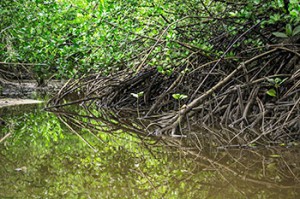 Much of MAP’s work surrounds the concept of Community-Based Ecological Mangrove Restoration (CBEMR) wherein, as it sounds, community participation is paramount. From the planning stages in community meeting rooms and the homes of local project leaders to the physical work of digging canals, members of the local communities in which MAP operates are involved in every step of the restoration process.
Much of MAP’s work surrounds the concept of Community-Based Ecological Mangrove Restoration (CBEMR) wherein, as it sounds, community participation is paramount. From the planning stages in community meeting rooms and the homes of local project leaders to the physical work of digging canals, members of the local communities in which MAP operates are involved in every step of the restoration process.
Part of its relationship-building process has been the introduction of alternative livelihood programs. While certain people have the ability to take off work to attend a project meeting or to provide manual labor, that is oftentimes a luxury not afforded to subsistence farmers or fisherman.
To mitigate this, participants are compensated a day’s wages, which in turn displays MAP’s commitment and allows community members to take ownership of the conservation efforts that will restore the ecology of their villages, creating countless returns in the process. Ning Enright, Field Project Manager in Thailand, said, “They have to feel like it is their project too because, when we finish a project, the work is still there. They’re the ones who will need to continue.”
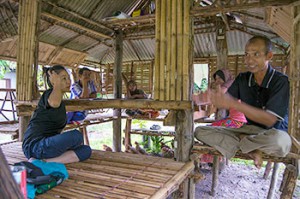 Working to ensure the posterity of their projects, MAP also involves the children of the villages. While taking time lapse photos to mark the growth of the trees, we clumsily traipsed around the mangrove restoration site, watching with admiration as the children ran from point to point among roots, crab dwellings and mud that clung like thick molasses, racing each other to be in the next photo. Por Nakornchai, a GNF Project Manager working with MAP, described their dedication to involving children. “I think of teaching conservation at a young age like teaching a language at a young age. We want kids to grow up fluent in their knowledge of protecting the environment.”
Working to ensure the posterity of their projects, MAP also involves the children of the villages. While taking time lapse photos to mark the growth of the trees, we clumsily traipsed around the mangrove restoration site, watching with admiration as the children ran from point to point among roots, crab dwellings and mud that clung like thick molasses, racing each other to be in the next photo. Por Nakornchai, a GNF Project Manager working with MAP, described their dedication to involving children. “I think of teaching conservation at a young age like teaching a language at a young age. We want kids to grow up fluent in their knowledge of protecting the environment.”
MAP Asia’s efforts have led to a strong relationship between the organization and engaged local community members, which is the backbone of any sustainable field project. The passion of the MAP Asia staff seems matched wholeheartedly by the kind and enthusiastic community members with whom we were fortunate enough to meet, talk with and shovel beside. In our eyes, these communities and the people of the Mangrove Action Project deserve each other.
Welcome New Members
Please welcome our newest Global Washington members. Take a moment to familiarize yourself with their work and consider opportunities for support and collaboration!
Kilimanjaro Level
Tif USA: Formerly named ISIS Group, Tif USA is currently going through a rebranding process. They work side by side with communities and children in remote areas of Nepal and Uganda to improve lives through health, education and other development projects. They also aims to change the way people think about the role of business, and the power of business/non-profit partnerships. www.isisgroup.org
Cascades Level
Global Peace Foundation, Education Division: The Education Division of Global Peace Foundation aims to transform education so that it is relevant in today’s world. They work with educators and changemakers at the grassroots, national and global levels to ensure that students graduate ready to succeed in all aspects of life in the 21st century. www.globalpeace.org
Sherris Consulting: Sherris Consulting works with clients to maximize the impact of global health investments. Current focus areas include: Developing strategies to measurably impact critical health challenges, partnering for health product development and delivery success, recruiting and mentoring global health leaders and assessing programs for sustainability and transferability. Specific health areas of focus include women’s health, family planning, women’s cancers and NCDs. www.sherrisconsulting.com
Thriive: Thriive is a nonprofit organization dedicated to building prosperity in vulnerable global communities. thriive.org
Member Events
October 15: Washington Women’s Foundation // Strategic Board Governance: Best Practices for Nonprofit Board Members
October 16: World Affairs Council // YPIN Networking Event
October 18: Sister Schools // 10th Annual Gala
October 29: iLEAP // Open House
November 8: Water1st International // Give Water Give Life Benefit
November 8: African Chamber of Commerce PNW // 16th Annual Africa Day Business Forum
November 13: Schools for Salone // 4th Annual Seattle Anniversary Dinner
Career Center
Highlighted Paid Positions
Executive Assistant – Global Partnerships
Director of Development, Advocacy, and Communications – Committee for Children
Grants Management – IDRI
Highlighted Volunteer Positions
Volunteer/Intern – Days for Girls International
Volunteer – NPH USA
For more jobs and resources, visit https://globalwa.org/resources/careers-in-development/
GlobalWA Events
October 20:
Ghana’s Oil for Food Initiative
October 23:
Networking Happy Hour with Friends of GlobalWA, Humanosphere and World Affairs Council
November 12:
New Member Orientation
November 13:
Executive Director Roundtable
December 3:
GlobalWA 6th Annual Conference
